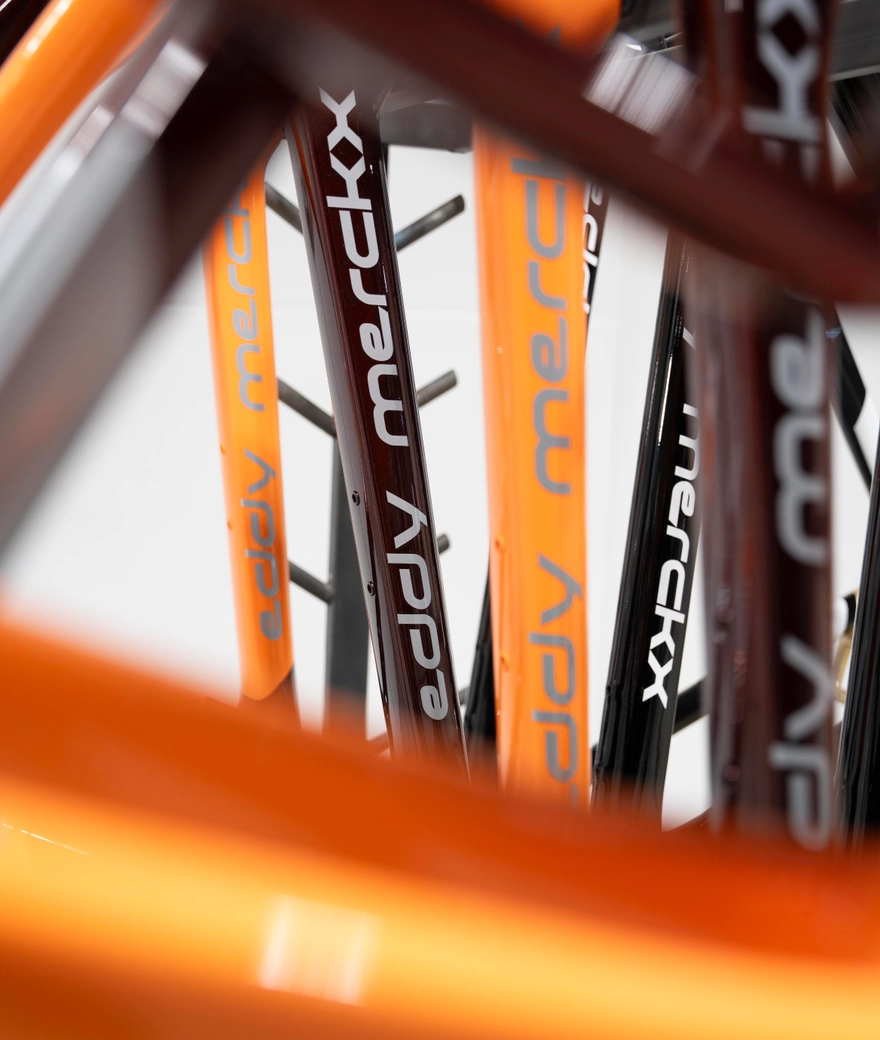Carbon, aluminum, or steel?
Carbon, aluminum, and steel are the most common materials used in bikes in the 21st century. Eddy Merckx also chooses these three well-known materials. In addition, we offer titanium bikes, which are handmade in Belgium. You can read more about this later in this blog.
Steel was particularly popular until the end of the 1980s and has recently made a comeback. In the mid-1990s, aluminum bikes gained popularity, and carbon bikes became the new standard at the top around the turn of the century.
Steel
Steel at Eddy Merckx
On one hand, there is Corsa: the high-end segment with bikes that are handmade in Belgium. On the other hand, there are also the entry-level steel models of our Pévèle and Strasbourg bikes.
Aluminium
In terms of price, aluminium is cheaper than carbon. This is also evident in the aluminium versions of the Pévèle and Strasbourg at Eddy Merckx. The relatively large difference is often an argument in favor of choosing aluminium. Durability is also a major advantage of aluminium. This material can withstand rough treatment, although there is a certain degree of metal fatigue over the long term.
Carbon
In general, carbon bikes are the most popular in the cycling world. At Eddy Merckx, the 525 and Mendrisio models are only offered in carbon. These bikes are seen as the ideal combination of comfort, low weight, and an aerodynamic character. With these bikes, you can also tackle the classics perfectly. The Pévèle C and Strasbourg C models are also made of carbon.
In summary, when choosing between steel, aluminum, or carbon, it is important to consider your own priorities. Do you want to go as fast as possible? Are you working with a maximum budget? Is it important that your bike is made from the strongest material? Is it a problem if the bike is a bit heavier? These are all questions you should ask yourself before making a decision. Whether you are looking for a bike for all terrains, challenging off-road trips, or racing, we have it all in our range!






